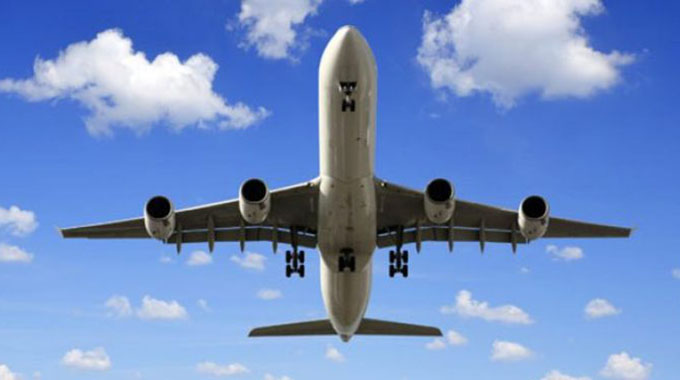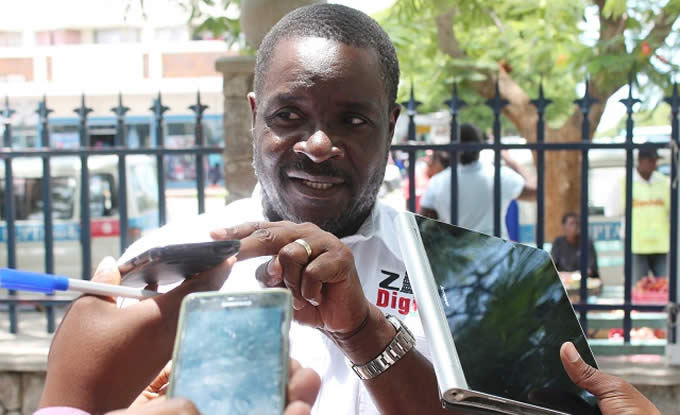Please free us from this travel bondage

Baffour Ankom Correspondent
”NEITHER a wise nor a brave man lies down on the tracks of history to wait for the train of the future to run over him”– Dwight D. Eisenhower”
Sometimes I don’t know what we Africans want, honestly. The news on January 28 that only 23 of the continent’s 55 countries put their names to the establishment of the Single African Air Transport Market (SAATM), one of the 12 AU Agenda 2063 flagship projects, was hugely disappointing, to say the least – considering that the SAATM has been in the works for 38 long years!
I repeat, 38 long years, dear reader!
Why the other 32 countries have to wait – and for how long Dear Lord? – to join such an important, future-defining project that means so much to the economies of our countries and citizens, beggars belief.
It doesn’t help any African’s confidence that these 32 countries profess to believe in, and are in fact signatories to, the AU Agenda 2063, which is Africa’s “strategic framework for the socio-economic transformation of the continent over the next 50 years”, an agenda that “builds on and seeks to accelerate the implementation of past and existing continental initiatives for growth and sustainable development”.
The apathy, or is it antipathy, of the 32 “refusnik” countries astounds! Yet, the argument for the SAATM is so compelling that nobody with African blood coursing through their veins should refuse to support its establishment or, sin of all sins, decline to be a member.
Let’s look at the facts: The conception of the SAATM goes back to a “decision” taken by aviation ministers of the Organisation of African Unity (OAU) who met in the Ivorian political capital, Yamoussoukro, on November 13-14 1999, under the joint auspices of the UN Economic and Social Council and the UNECA. This was a good 19 years ago!
That “decision” (or agreement) which most African countries put their names to at the time is now known as the “Yamoussoukro Decision”. We all know that the OAU morphed into the African Union (AU) in 2002.
According to the historical record, the Yamoussoukro Decision was endorsed by the 36th Ordinary Session of the Assembly of Heads of State and Government of the OAU held in Lome (Togo) on July 10-12 2000. The preamble of the Yamoussoukro Decision makes reference to four previous and important OAU decisions on continental aviation. They are:
(a) The general policy statement on civil aviation made by the Conference of Heads of State and Government of the Organisation of African Unity under Resolution CM/Res.804 (XXXV) of June 1980.
(b) A new African civil aviation policy adopted on October 7 1988, whose primary purpose was to create a conducive environment for the development of intra-African and international air services.
(c) The decisions of African ministers responsible for civil aviation adopted in Mauritius in September 1994 with a view to accelerating the implementation of (something like) the Yamoussoukro Declaration, especially those relating to the granting of traffic rights, regional cooperation in air transport and the role of governments.
(d) The recommendation of the 11th Conference of African Ministers responsible for Transport and Communications held in Cairo from 25 to 27 November 1997 calling for the organisation of a regional meeting of African Ministers Responsible for Civil Aviation to review and find ways and means of implementing (something like) the Yamoussoukro Declaration.
Remarkably, the signatory countries of the Yamoussoukro Decision agreed in 1999 to be “bound by the decision to liberalise the access to the air transport market in Africa in its entirety and (to) fully implement the said decision as party thereto”.
The countries also promised to take “all the necessary administrative measures to give full effect to this declaration . . . except to the extent provided for a maximum transitional period not exceeding two years from the date of the declaration.”
38 years of talk, talk, talk
In effect, if we go back to “the general policy statement on civil aviation made by the Conference of Heads of State and Government . . .” Africa, this dear continent of ours, has had 38 years to discuss, plan and drag itself to implement something like the SAATM.
Thirty-eight years during which the continent has done what it does best – hold endless conferences and summits and talk and talk and talk – and yet be unwilling to implement an important project as the SAATM.
You can see where my, and millions more Africans’, disappointment with the 32 refusnik countries come from.
Our continent is the only place in the world today where direct flights between countries are at a criminal minimum.
“Currently,” according to the AU, “only five countries have direct flights connecting to more than 20 other African countries – Ethiopia (30 flights), Kenya (28), South Africa (25), and Nigeria (20).
As a result, air travel within Africa is so difficult and so frustrating that passengers are compelled to undergo bizarre routing and unnecessary layovers that shame the continent we call our motherland.
Just hear this: Because of the lack of direct flights, in 2015, my wife and I, going on assignment in Blantyre (Malawi) from Harare (Zimbabwe) – a one-hour journey by plane – had to fly via Addis Ababa in Ethiopia (a journey of four-and-half hours), and then spend one night in Addis before catching a connecting flight of three-and-half hours the next day to Malawi. That made it a 20-hour journey (made up of eight hours flying time and a 12-hour layover night in Addis). And the same journey could have been made in one bloody hour (excuse my French dear reader) if there had been a direct flight.
A similar thing happened to some Cameroonian journalists attending a conference in Accra (Ghana) last September. Because of the lack of direct flights, they had to be routed via Addis (a four-hour journey) to the far east of the continent where they spent a night before catching a layover flight the next morning to Accra in the far west of the continent, another journey of nearly six hours. That made it a 22-hour journey for them. Yet if there had been a direct flight, it would have taken the poor souls under two hours to arrive in Accra from Yaounde.
Millions of Africans have had the same bad experience travelling within blessed Africa, and there is no end to the nightmare. If time is money as they say, you can imagine the zillions of dollars Africans lose every year doing the merry-go round between far-flung airports. It is a bondage Africans deserve to be freed from – and immediately!
As the AU has cared to point out: “The lack of direct flights between African countries holds back economic integration and makes journeys much longer for passengers. By increasing connectivity, the AU’s SAATM initiative promises to end travellers’ misery and boost economic growth.”
What’s more: “If air transport is fully liberalised in Africa,” says the AU, “passenger volumes can increase from the 2015 figure of 79,5 million passengers to 303 million by 2035 and to 602 million by 2040”.
The tax revenue that will accrue to our countries from such a huge jump in passenger traffic will be so beneficial to our economies.
This is why the SAATM seeks a full liberalisation of intra-African air transport services in terms of market access, the removal of restrictions on ownership and the provision of intra-regional connectivity between Africa’s capital cities.
“The impact of air transport liberalisation accrues to the entire continent by improving air services connectivity and air efficiencies,” says the AU.
“Bringing an end to the endless hours spent at airports waiting for connecting flights and the knowledge that a great continent is coming together should be the driving mission of African governments and the central story of SAATM.”
But don’t tell that to the 32 refusnik countries of Africa – they might well decide to join the SAATM 400 years from now!
Until then, there is little hope we will wake up from this nightmare.










Comments